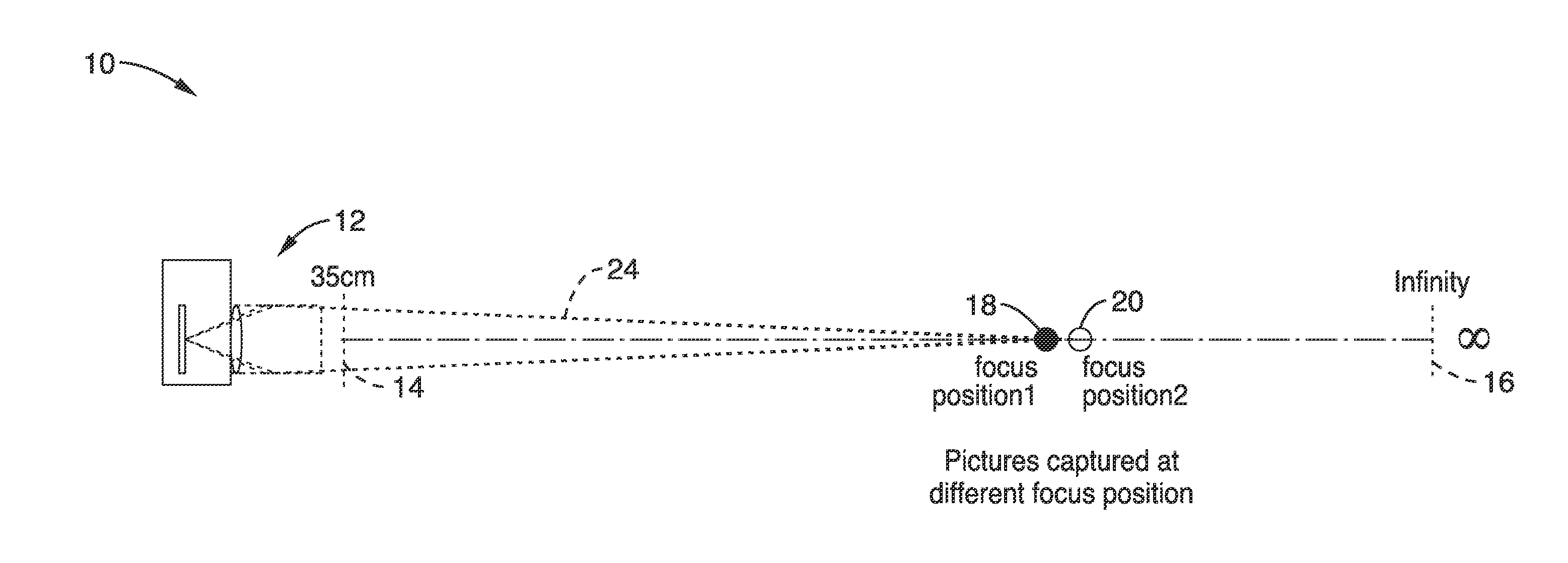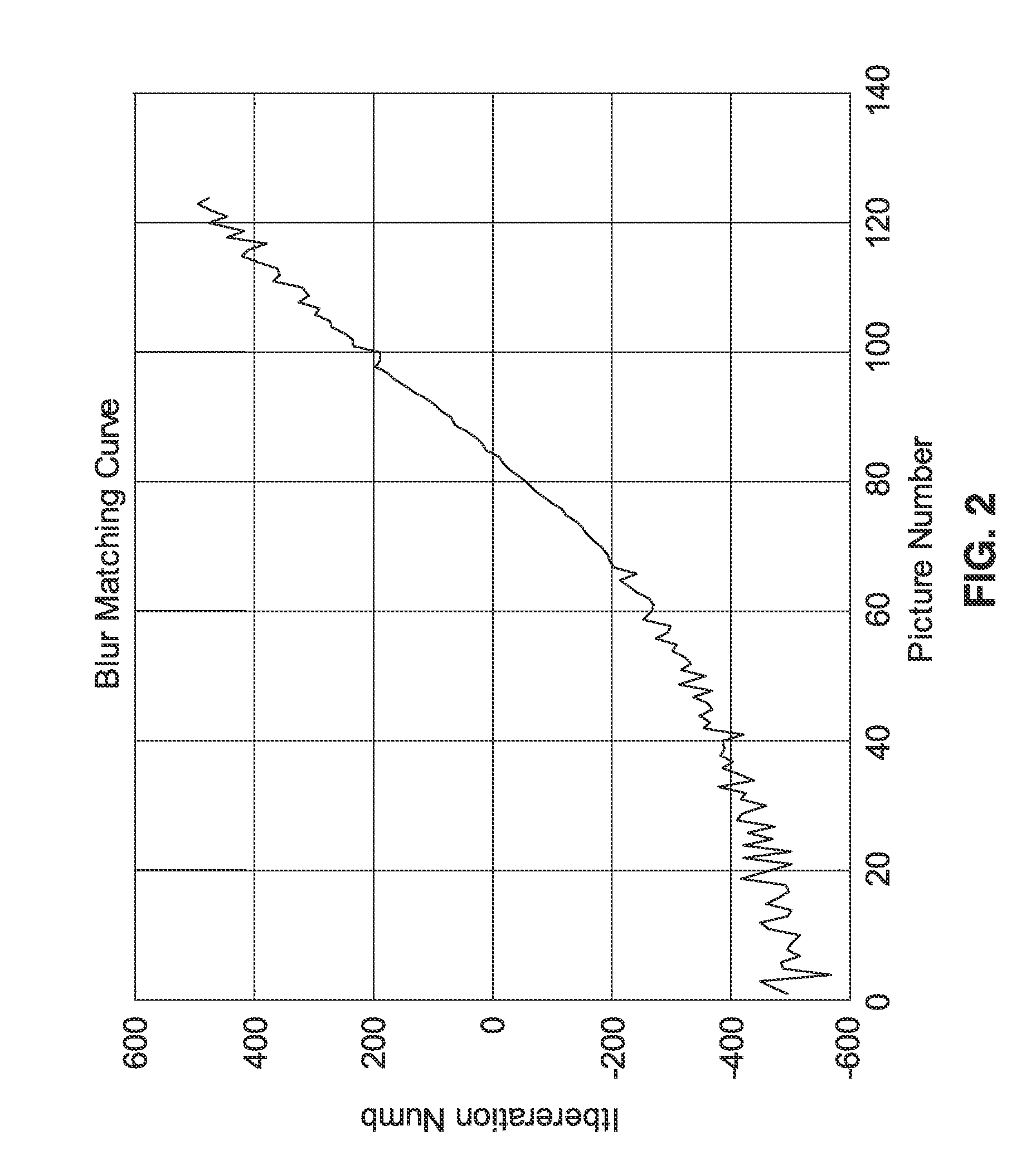Blur function modeling for depth of field rendering
a function modeling and depth of field technology, applied in the field of image capture devices, can solve the problems of having severely limited aperture sizes, obtaining sufficient lighting to capture images, and not making a small aperture lens equal to a conventional large aperture lens
- Summary
- Abstract
- Description
- Claims
- Application Information
AI Technical Summary
Benefits of technology
Problems solved by technology
Method used
Image
Examples
embodiment 1
[0107]2. An apparatus , wherein said apparatus generates a digital image captured with said imaging element at a first aperture setting which appears as if it has been captured at a second aperture setting which is larger than said first aperture setting.
[0108]3. An apparatus according to embodiment 1, wherein said matching curve is retained in the memory of said apparatus in response to capturing a sequence of images across a focal range of the apparatus to establish a relationship between iteration number and lens focus position.
[0109]4. An apparatus according to embodiment 1, wherein an amount of said defocus blur for an image can be determined in response to said matching curve by summing iteration numbers in an interval between an in-focus, first position, and a second position.
[0110]5. An apparatus according to embodiment 1, wherein slope of said matching curve is inversely proportional to f-number squaring.
[0111]6. An apparatus according to embodiment 1, wherein said defocus ...
embodiment 13
[0119]14. An apparatus , wherein said apparatus generates a digital image output captured with said imaging element at a first aperture setting which appears as if captured at a second aperture setting which is larger than said first aperture setting.
[0120]15. An apparatus according to embodiment 13, wherein said matching curve is retained in the memory of said apparatus in response to capturing a sequence of images across a focal range of the apparatus to establish a relationship between iteration number and lens focus position.
[0121]16. An apparatus according to embodiment 13, wherein in response to said matching curve, an amount of defocus blur of an image can be computed as a sum of iteration numbers in an interval between an in-focus position, first position, and a second position.
[0122]17. An apparatus according to embodiment 13, wherein slope of said matching curve is inversely proportional to f-number squaring.
[0123]18. An apparatus according to embodiment 13, wherein said d...
embodiment 23
[0129]24. A method , further comprising detecting user input for selecting a digital aperture size, or a mode associated with use of said digital aperture size, which exceeds the physical aperture sizing which is attainable.
PUM
 Login to View More
Login to View More Abstract
Description
Claims
Application Information
 Login to View More
Login to View More - R&D
- Intellectual Property
- Life Sciences
- Materials
- Tech Scout
- Unparalleled Data Quality
- Higher Quality Content
- 60% Fewer Hallucinations
Browse by: Latest US Patents, China's latest patents, Technical Efficacy Thesaurus, Application Domain, Technology Topic, Popular Technical Reports.
© 2025 PatSnap. All rights reserved.Legal|Privacy policy|Modern Slavery Act Transparency Statement|Sitemap|About US| Contact US: help@patsnap.com



